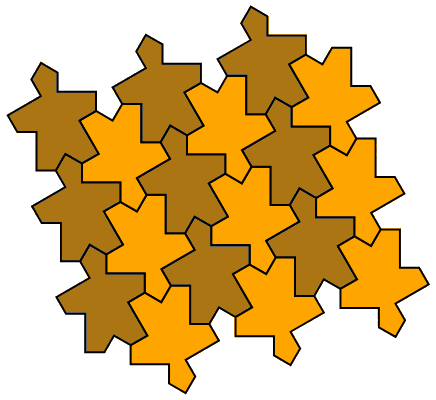The gingerbread man
Ortwin Schenker named this shape the gingerbread man. It can only tile one way but hides a secret or two.
This is one from hundreds of computer generated polygons supplied by Bob Nungester and Bram Cohen. The shapes are all based on the Spectre, i.e., side lengths of one or two units and with similar angles.
I pulled out a couple of other tiles (below, far right) that coincidentally make up the top and lower half of the gingerbread man. Both display mirror symmetry and can tessellate in various ways. I later named them 'yin' and 'yang'
Interesting periodic patterns can be created easily by combining zigzag motifs.
Also, more chaotic patterns can evolve from periodic strips.
Below is a patch of yin with a yang void.
Curiously yin and yang have exactly the same areas. How do I know this? Well, by splitting the gingerbread pieces further from top to bottom and then mirroring one half of them, they produce an identical shape.
But this polygon is less interesting unless flipping of the tile is allowed.
Yin and yang can also produce tilings from a void of this new shape. As with all of these examples, patches should be able to extend indefinitely.
Most of these drawings were made up in a specially adapted tiling applet by French mathematician Arnaud Chéritat (very much appreciated). Below is a link to it and two others for the hat/turtle and Spectre.





















Comments
Post a Comment